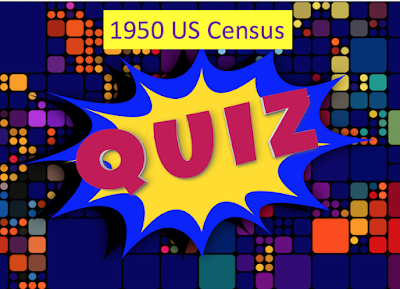My friend Paul, president of a local genealogy club, suggested a 1950 US Census project that sounds like fun as well as a great way to learn more about ancestors' FAN club (friends, associates, neighbors).
After April 1, when the US Census is made public, we can not only search for ancestors, but look at who lived nearby. Whether we find each ancestor using the basic surname search or do homework to browse (as in this example) the proper Enumeration District, we can then click through each page in the ED to spot familiar names, addresses, ages, birthplace details, and much more.
Hello neighbor
This is a more deliberate effort to actively search out FAN club members. I usually look at the page before and after where my ancestor is in the ED, hoping to find other relatives or familiar names. But Paul's idea is to proactively search out FAN club names we already know as well as investigating the entire ED where an ancestor lives, looking for FAN club members we might not know or expect to find there.
Because my parents lived in a large apartment building in the Bronx, New York, I'll be browsing that ED to look at their neighbors. This 1950 US Census will also tell me more about my father's family, because his widowed mother, unmarried brother, and married sister lived in the same apartment building.
Seeing who else was in each apartment, and reading about their background will help me understand family dynamics at that time. There may even be people who were temporarily visiting on Census Day--if I'm lucky, possibly a cousin or an aunt or someone's mother-in-law. Plus I'll be browsing for names of people on the block or around the corner that I remember my parents mentioning in conversation.
Friend, neighbor, in-law?
I'm lucky to have my mother's 1953ish address book with names, street addresses, and phone numbers of family and neighbors. I don't recognize every name, but some might be distant relatives and some might be in-laws. I'll be watching for them in the Census to clarify potential family connections.
Similarly, the 1950 Census will enable me to learn more about the names in my late father-in-law's diaries. He mentioned people who I suspect were friends and neighbors in Cleveland Heights. I'll search for them, see where they lived, how close their residence was to the Wood residence, and whether there are any fresh clues to relationships (business or personal).
Paul will be searching for the surnames of kids he remembers from his early childhood. The outcome will be a map of his neighborhood, with relatives and FAN club members marked by location.
Will you be working on a 1950 US Census FAN club project?




























